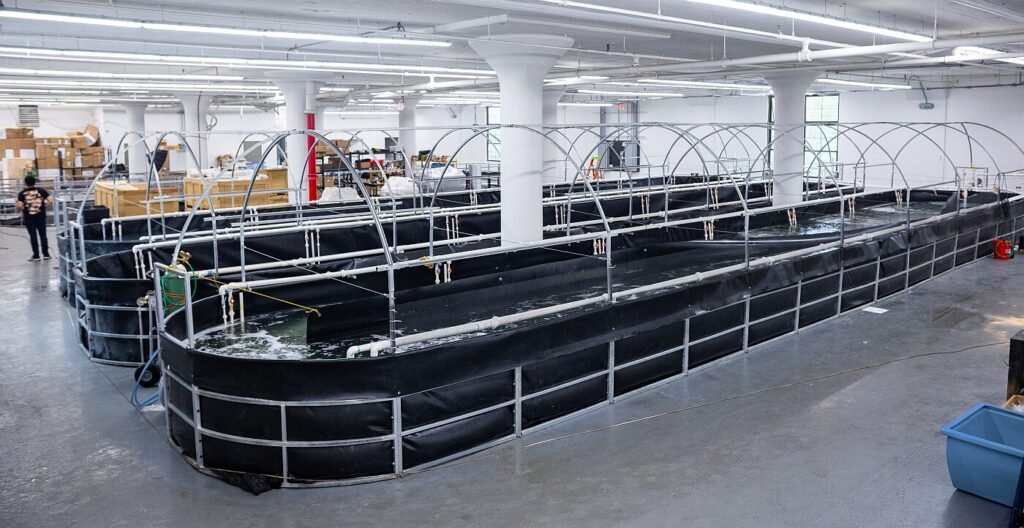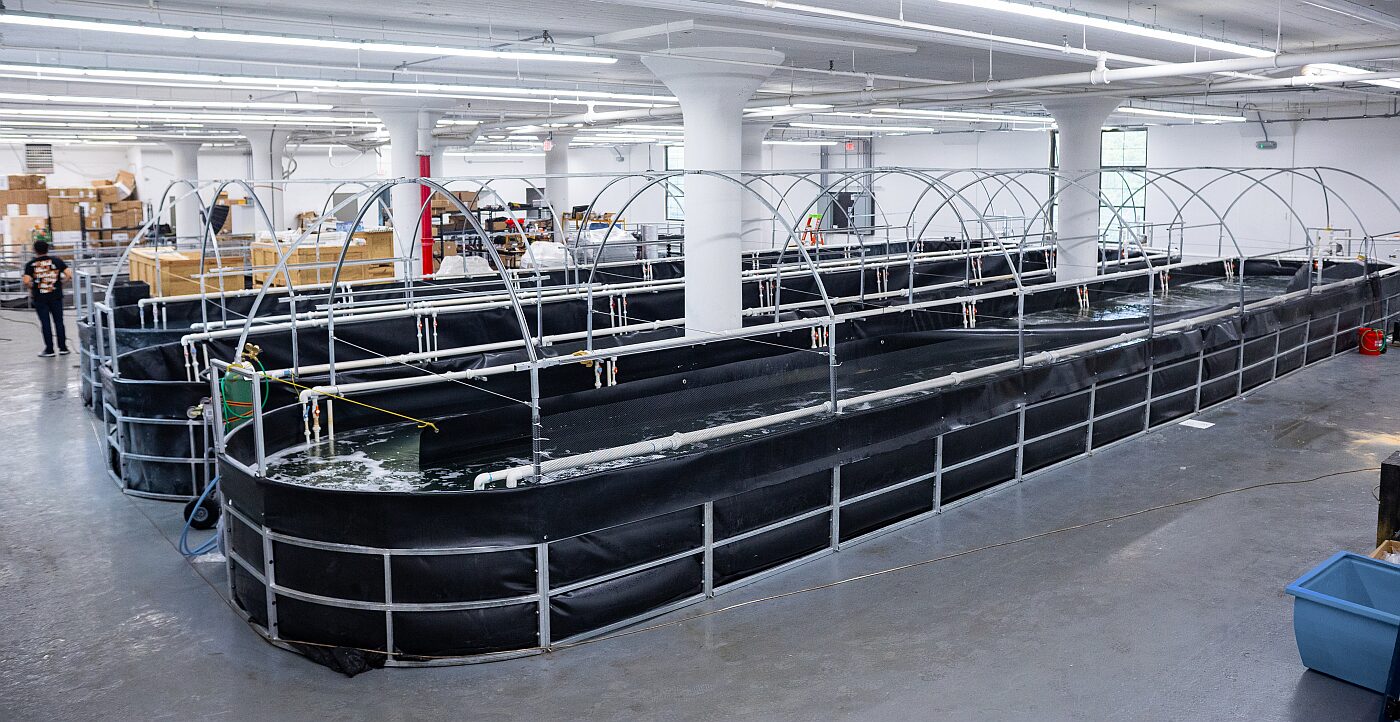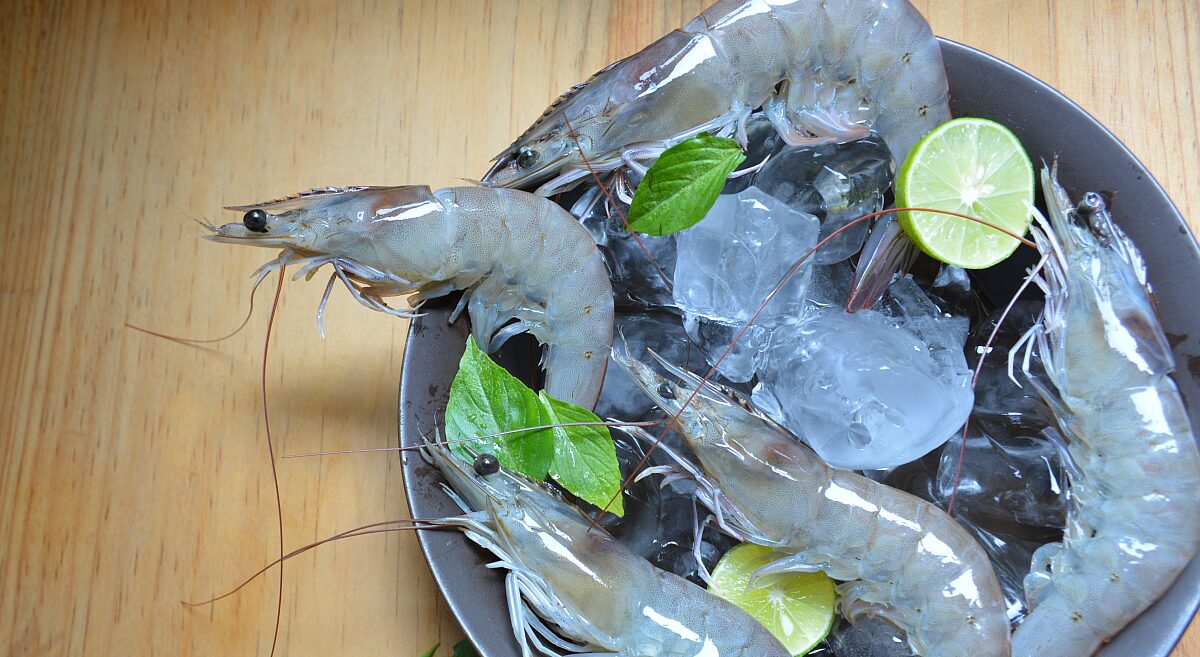
Well over 90% of shrimp consumed in the US is imported, with the bulk coming from India, Ecuador, Vietnam, and Indonesia, countries now subject to hefty import duties.
Not surprisingly, this has generated fresh interest in US-based firms offering alternatives, says the founder of high-tech shrimp farmer Atarraya, who claims his unit economics are attractive with or without tariffs, but says they “definitely make life easier.”
“As you can imagine, my inbox is getting crowded,” says Daniel Russek, who has spent his career developing an alternative to coastal shrimp farming, which comes with a laundry list of problems from slave labor and the destruction of mangrove forests and wetlands to the pollution of waterways with organic waste, chemicals and antibiotics. It is also vulnerable to disease and extreme weather.
“I’ve never had so much inbound before,” he tells AgFunderNews. “Now tech investors that never used to return my calls are saying well, this is very interesting.”
IKEA-style flat-packed ‘Air Shrimp Boxes’
Atarraya, which originally raised its shrimp in rigid blue vessels that look like shipping containers, has recently introduced a lighter, cheaper, IKEA-style flat-packed container that slashes capex costs by 70% per ton and are far easier to ship, claims Russek.
Atarraya’s Air Shrimp Boxes are now being rolled out at a new facility in Plainfield New Jersey, says Russek, who deploys a biofloc process harnessing a microbial community to manage the nitrogen cycle, such that ammonia secreted by shrimp is converted into nitrite by heterotrophic bacteria.
Nitrifying bacteria further convert nitrite to nitrate, which is assimilated into microbial biomass that is removed and used as organic fertilizer. Air pumps are used to ensure the tank maintains adequate levels of dissolved oxygen.
“In the tanks we populate this microbial community that includes bacteria, algae, and protozoa [eukaryotic microorganisms],” explains Russek.
While the contents of Atarraya’s tanks can look rather murky and lagoon-like, you don’t need to see all the shrimp to determine how they are doing, he points out. “We can determine that by monitoring what’s happening in the tanks [pH, salinity, oxygen levels, alkalinity, temperature, ammonia, nitrites, nitrates]. We also have a way to estimate biomass in the tank, and after many years, we have developed a pretty predictable system.”
The New Jersey facility
Atarraya, which runs a facility in Mexico featuring a hatchery and a series of shrimp boxes, currently has a facility in Indianapolis (utilizing its original blue container-like tanks) that supplies customers in Chicago, but is now rolling out the new lighter, cheaper tanks in New Jersey.
“We found a customer that wanted enough shrimp to justify a new farm in New Jersey, and we needed to build it very fast,” says Russek. “We’re in an old industrial building on the third floor, so there was no way we would have been able to do this [with the rigid containers].
“The property is perfect for us, because it’s within 50 minutes of Manhattan, where we have some key accounts. The great thing [about the new design] is that we were able to save a ton of money on capex. And at that point, we are competitive with shrimp coming in from Ecuador.”
The new tanks, which are 19 meters long, combine steel frames and fiberglass and plastic, and can be shipped far more easily than the original tanks, says Russek. “We can get 20 tanks in one shipping container, so right now we are about 60% of our deployment, which will be 38 boxes [when complete] in a facility of around 15,000 square feet.”

The addressable market
Initially, Atarraya has been focusing on fine dining restaurants, which have been buying wild caught shrimp or specialty shrimp such as Argentinian red shrimp, Santa Barbara spot shrimp, and rock shrimp and are looking for a fresh, traceable, chemical-free product, he says.
However, the new, cheaper growing system also enables Atarraya to reach a more mainstream market, says Russek.
“We think that [the high-end market] can take us to around $20 million in sales, so now we’re focusing on our second market, which is key accounts, corporate catering, big foodservice operators, where we are creating partnerships with distributors. Here, we basically get the client, and then they figure out the logistics,” adds Russek, who is now in talks about setting up a facility in the United Arab Emirates.
“We are going to send our own team and take responsibility for the project for a year. And then the idea is that we then can have a joint venture, which they will operate, so that’s very exciting. The beauty of our system is that we don’t need highly skilled labor as all of our farms run on software, so you don’t really need to teach people how to farm shrimp [Atarraya’s software automatically defines tasks for employees, guides decision-making, and forecasts production].”
Once the company gets to a certain scale in any given market, then it would make sense to build a hatchery, he says. “So in Mexico, we have a hatchery and a farm, whereas in the US we just have the farms.”

Competitive pricing
So how does Atarraya’s approach compare to recirculating aquaculture systems (RAS) deploying filtration systems?
According to Russek: “That’s basically aquarium technology, which can cost $70,000 per ton. With our new shrimp farming boxes we’re at $17,000 per ton, so we’re within hitting distance of traditional farming in Ecuador, where they spend $12,000 to $15,000 per ton of shrimp.
“We are also much faster at setting up farms vs these RAS systems as we can build one of our farms in six months as opposed to three years.”
That said, shrimp farming in any system is not for the faint-hearted, he stresses. “A ton of stuff can go wrong. First the oxygen levels have to be right, next, developing a mature biofloc system [where microbes manage the nitrogen cycle] takes a long time to figure it out, and third you have to manage the nitrite and nitrate.
“But we’ve been learning how to do this for a while now, and we’ve not had a single surprise in the past year and a half.”
The post Atarraya’s flat-packed high-tech shrimp farms roll out in New Jersey as tariffs upend trade appeared first on AgFunderNews.